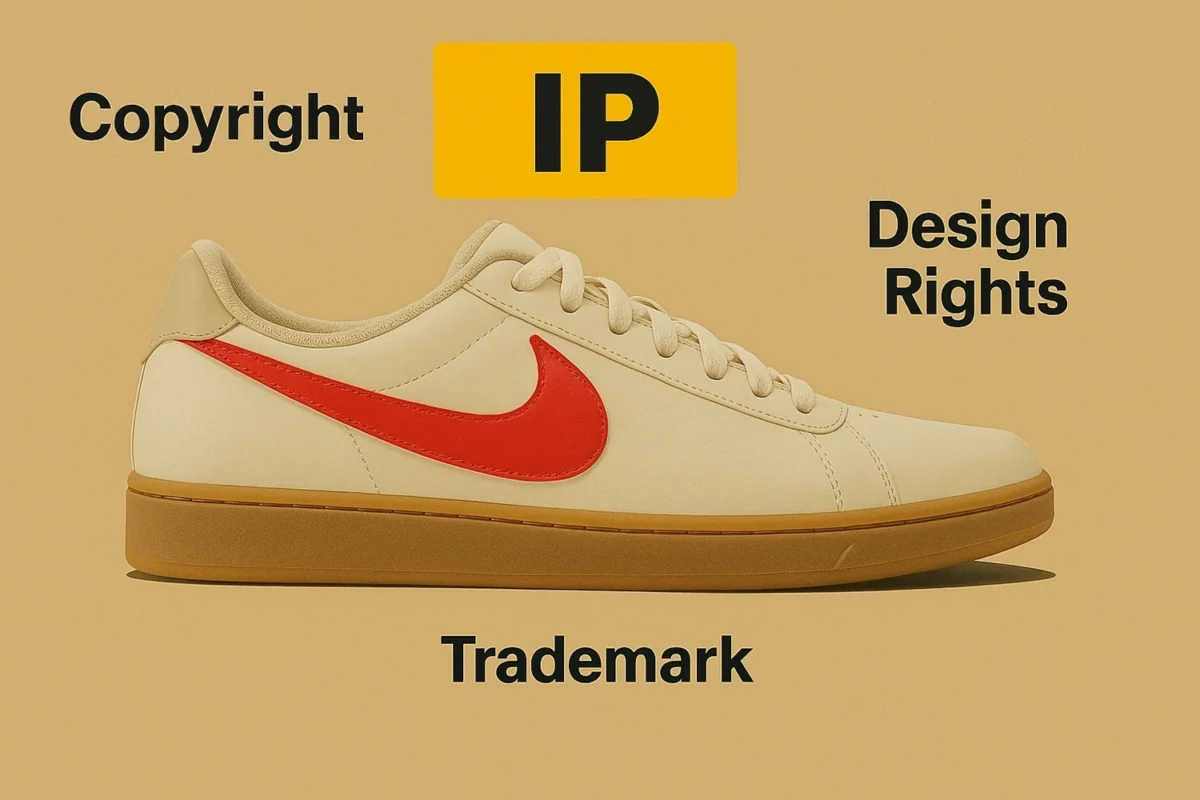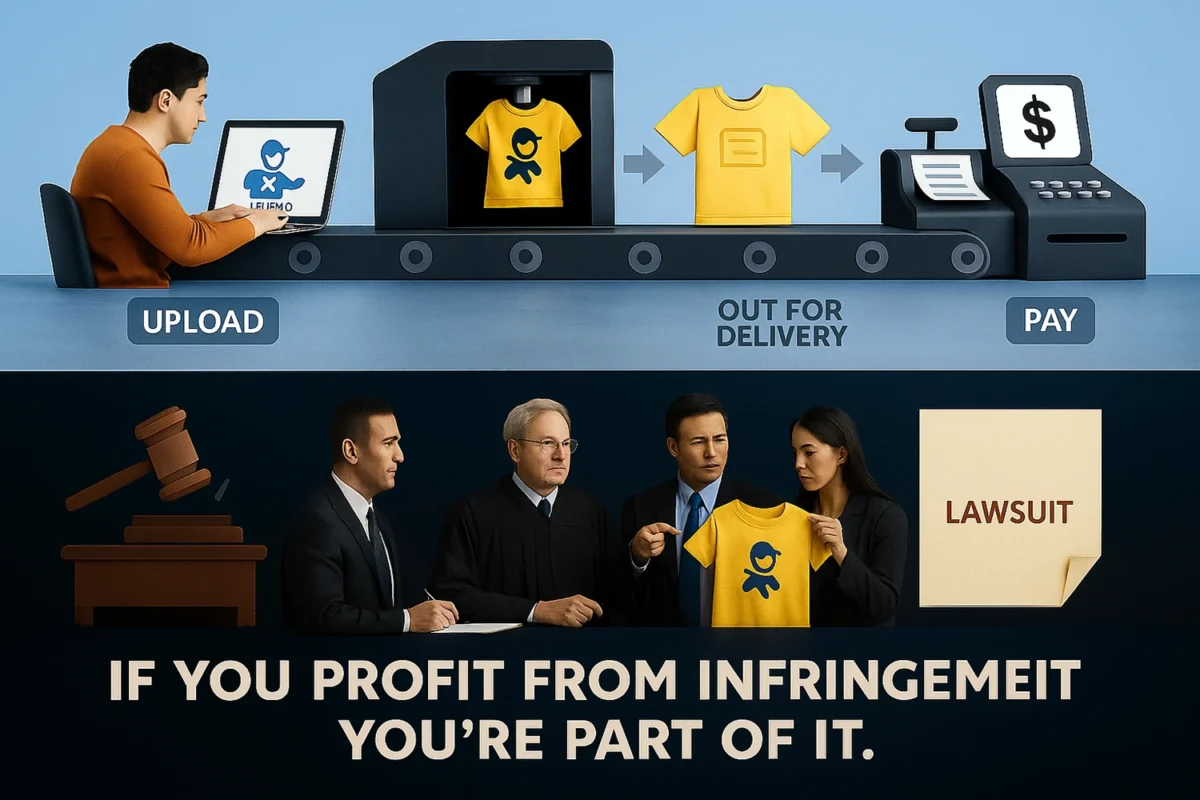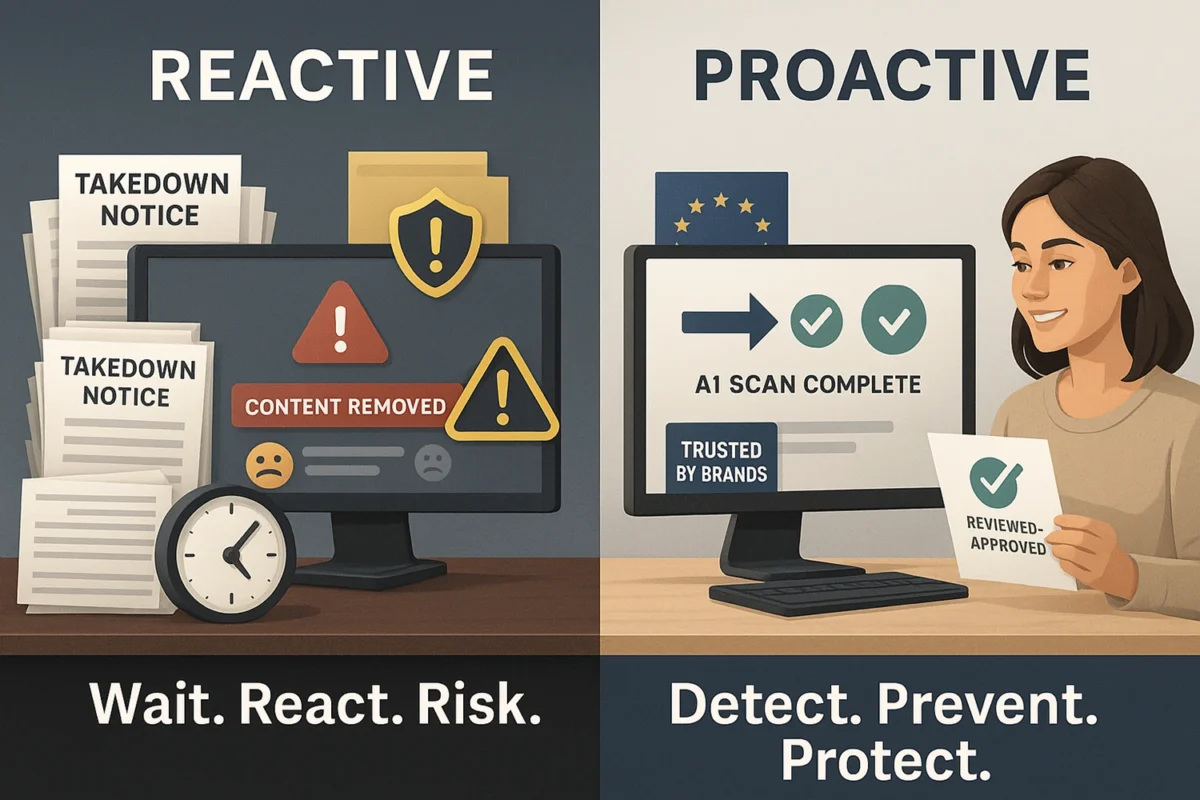What is IP? A Breakdown Of Copyright, Trademark, And Design Rights
“IP” is one of those terms that gets thrown around a lot—especially on content-driven platforms. But what exactly is intellectual property?
For platforms that host user-generated content (UGC), sell print-on-demand (POD) products, or enable creator monetization, understanding IP isn’t just a legal checkbox—it’s a core business requirement.
Here’s a breakdown of the three most common types of IP that platforms need to watch out for—and why each one plays a different role in compliance.
1. Copyright: Protecting Original Creative Works
Copyright is a legal right that protects original creative works—like art, music, writing, and video—by giving the creator exclusive control over how the work is used, copied, shared, or modified. It applies automatically the moment a work is created and fixed in a tangible form.
Platform risk example: A user uploads a t-shirt design featuring fan art of a movie character. Even if it’s “hand-drawn,” it can still infringe copyright if it’s based on a protected visual.
Bottom line: If it’s original and creative, it’s probably protected by copyright—even if it’s not registered.
2. Trademark: Protecting Brands, Logos, And Commercial Identity
Trademark is a type of intellectual property that protects brand identifiers—such as names, logos, slogans, and distinctive packaging—that help consumers recognize the source of goods or services. Trademark rights prevent others from using similar marks in a way that could cause confusion in the marketplace. Trademark examples – Nike swoosh, “Just Do It”
How it works:
- A trademark identifies the source of a product or service and protects consumers from confusion.
- Owners must actively enforce their rights or risk losing them.
- Registration helps—but even unregistered “common law” trademarks may be enforceable.
Platform risk example: A creator lists a mug that says “Starbucks Vibes Only” using a green circular logo. Even if not identical, this could trigger brand confusion and trademark infringement.
Bottom line: Trademark law is about consumer perception—if it looks like a brand, it might infringe on one.
3. Design Rights: Protecting the Look and Feel of a Product
What it covers:
- The appearance of a product: shape, patterns, lines, colors, textures, etc.
How it works:
- Design rights protect how something looks, not what it does.
- Registered designs are more enforceable, but some jurisdictions (like the EU) recognize unregistered design rights.
- Often overlaps with copyright in product-heavy spaces like fashion and furniture.
Platform risk example: A user sells a phone case with a shape or layout that copies a protected product (e.g., Apple Smart Case). Even without logos, it may violate registered design rights.
Bottom line: If your users are selling physical goods, design rights matter—even in “generic-looking” items.
4. Differences Between the Three and Where They Overlap
| Type of IP | What It Protects | When It Applies | Common Examples |
| Copyright | Original creative expression | Automatically upon creation | Artworks, illustrations, music, blog posts |
| Trademark | Brand identifiers (names, logos) | Upon use in commerce or registration | Logos, slogans, product names |
| Design Rights | Visual design of physical objects | Upon registration (or automatically in EU) | Furniture, packaging, fashion |
- A collectible action figure might have:
- Copyright protection for the character design
- Trademark protection for the logo/name
- Design rights protecting the shape or surface detail
This overlap means a single product might infringe multiple rights at once, even if there’s no direct copying of a logo. For example:
- A Coca-Cola bottle shape: protected by design + trademark
- A character from a movie: protected by copyright + trademark
- A sneaker: potentially copyright (design), trademark (logo), and design rights (shape)
Key takeaway: Platforms need to recognize that different types of IP protect different aspects of the same thing—and traditional filters (e.g., for logos only) won’t catch them all.
5. Why This Is Important for Platforms
Most infringement on UGC and POD platforms isn’t from bad actors—it’s from users who don’t know the rules.
But even accidental infringement can create legal exposure, brand backlash, or payment provider issues.
Understanding the distinctions between copyright, trademark, and design rights helps platforms:
- Build more accurate detection workflows
- Train moderators to spot less obvious issues
- Reduce false positives (e.g., a design that’s fine under copyright, but infringing under trademark)
- Communicate better with users during disputes or takedowns
- Future-proof against evolving legal standards in IP enforcement
Platforms aren’t expected to be law firms—but they are expected to be responsible intermediaries.
Know The Landscape, Reduce the Risk
IP isn’t one-size-fits-all. Copyright, trademark, and design rights each protect different things, and your platform may encounter all of them—at the same time.
Understanding the distinctions and overlaps helps your platform:
- Detect real risk earlier
- Avoid legal liability
- Protect both creators and your brand
- Prove to regulators and rights holders that you’re doing your part
The good news? You don’t need to do it all manually. Tools like VISUA’s Infringio help platforms detect IP risk across all three dimensions—even when it’s subtle, altered, or disguised.
Want to see how Infringio helps detect IP issues before they go live? Book a demo with VISUA today.
Disclaimer: Not Legal Advice
This content is provided for informational purposes only and does not constitute legal or professional advice. The information reflects our understanding as of the date of publication and may not apply to every situation or jurisdiction. You should consult qualified legal counsel for advice tailored to your specific circumstances. Any actions taken based on this content are at your own risk. Neither VISUA nor its affiliates accept liability for any losses or damages arising from the use of this information.
Book A DemoRELATED
Redbubble, Teespring, and the Lessons of IP Enforcement Failures
Reading Time: 3 minutesPrint-on-demand (POD) platforms empower creators to design and sell products without holding inventory. But with that power…
BlogHow AI Is Changing the Game in IP Enforcement
Reading Time: 2 minutesIP enforcement used to be simple: But today’s infringement landscape – especially for POD and UGC-heavy platforms…
BlogThe Future of IP Compliance – Proactive vs. Reactive Models
Reading Time: 2 minutesFor years, most platforms treated IP compliance as a reactive function: But the market – and the…
Blog


